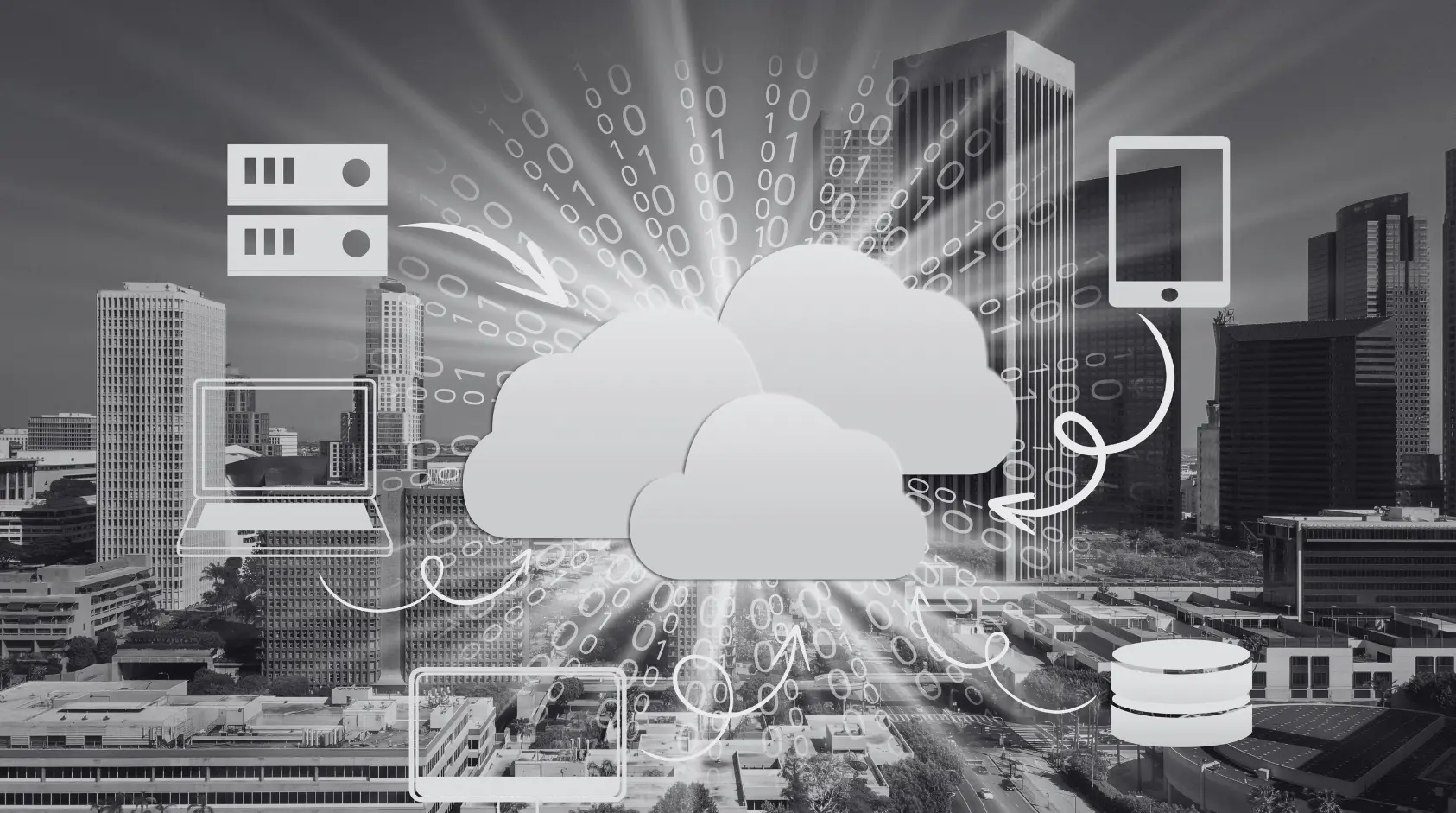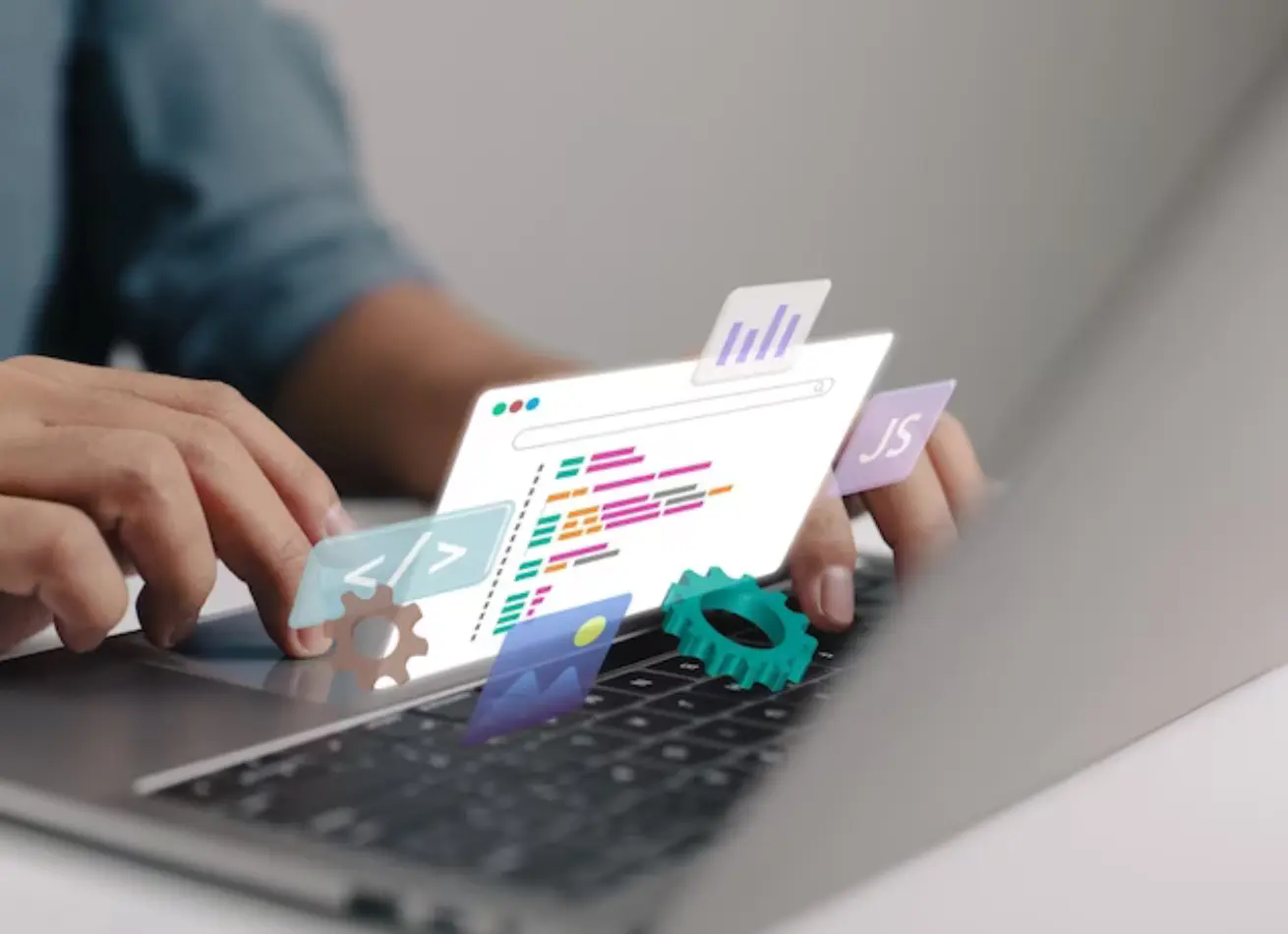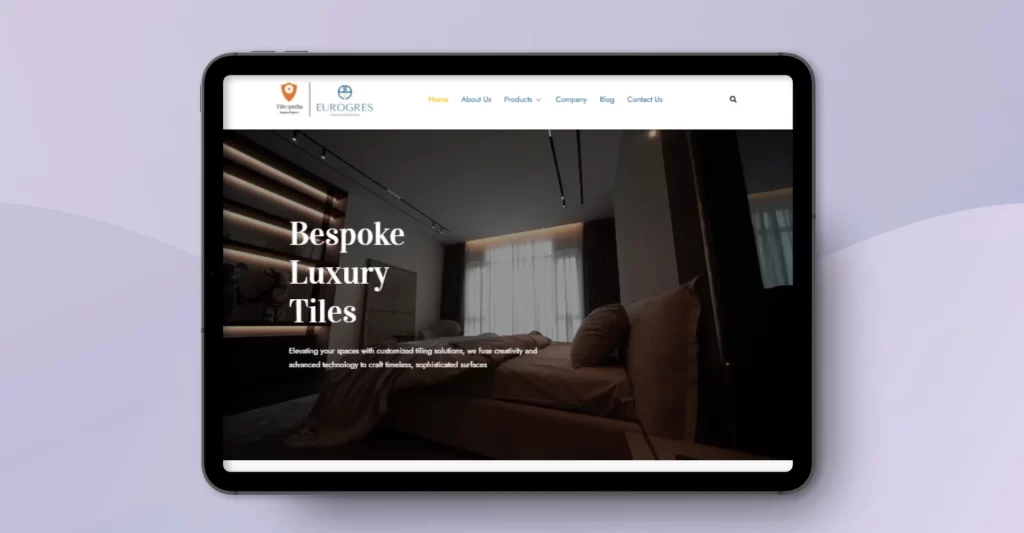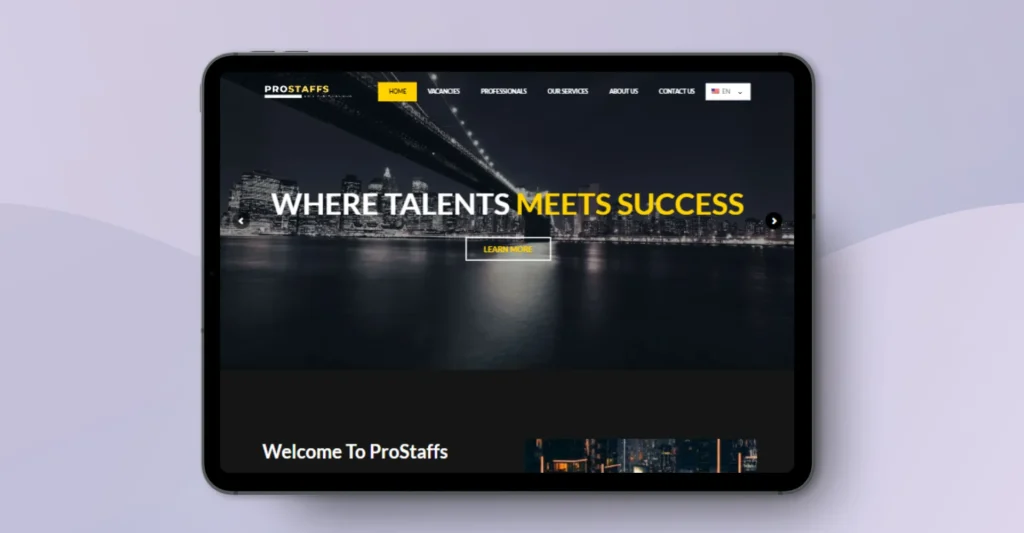Experience the pressure to deliver cutting-edge products and meet evolving user expectations? Uncover the web development trends of 2024 that ignite inspiration and assist you in staying seamlessly in the flow.
Navigating the ever-shifting landscape of digital innovation can often feel like a relentless race—a whirlwind of challenges and opportunities. As a developer, your struggles are genuine, dealing with the constant pressure to deliver cutting-edge products, remain competitive, and meet evolving user expectations can be overwhelming.
However, what if we shared that there’s a compass to guide you through this complex terrain? Imagine gaining insights that not only alleviate your challenges but also ignite a wildfire of inspiration. Well, consider yourself fortunate because we are embarking on a journey through the upcoming trends in back-end and web development .
This article aims to unveil the key trends that will shape the landscape in 2024, equipping you with the tools and knowledge to stay ahead of the curve. Whether you’re a seasoned developer striving for excellence or a product owner aiming to drive innovation, consider this your roadmap to success.
Navigating the ever-shifting landscape of digital innovation can often feel like a relentless race—a whirlwind of challenges and opportunities. As a developer, your struggles are genuine, dealing with the constant pressure to deliver cutting-edge products, remain competitive, and meet evolving user expectations can be overwhelming.
However, what if we shared that there’s a compass to guide you through this complex terrain? Imagine gaining insights that not only alleviate your challenges but also ignite a wildfire of inspiration. Well, consider yourself fortunate because we are embarking on a journey through the upcoming trends in back-end and web development .
This article aims to unveil the key trends that will shape the landscape in 2024, equipping you with the tools and knowledge to stay ahead of the curve. Whether you’re a seasoned developer striving for excellence or a product owner aiming to drive innovation, consider this your roadmap to success.

Integration of AI and machine learning
Artificial Intelligence (AI) and machine learning have evolved from mere buzzwords to potent tools within the developer’s toolkit. In the realm of back-end development, they assume a pivotal role by automating tasks, analyzing extensive datasets, and facilitating data-driven decision-making. Here’s how you can leverage these technologies to your advantage:
- Code Generation: Enhance efficiency by generating code snippets or even entire sections, thereby saving time and mitigating the risk of human error. Tools like OpenAI’s ChatGPT exemplify this capability, as they generate code based on natural language descriptions.
- Security and Code Quality Improvement: Employ AI-driven code review tools to analyze codebases, identifying potential bugs, security vulnerabilities, and quality issues. Examples such as DeepCode and CodeClimate assist developers in producing more secure code.
- Personalization: Utilize AI to analyze user behavior and preferences, enabling the delivery of tailored content and personalized product recommendations. This approach fosters higher user engagement and retention rates in both web and mobile applications.
- Predictive Analytics: Leverage machine learning models to forecast user actions, enabling the creation of preventive measures to address potential issues before they arise.
- Recommendation Engines: Implement AI-driven recommendation systems that suggest products, services, or content based on user preferences and behavior. This trend enhances user engagement and conversion rates.
- Chatbots and Virtual Assistants: Elevate customer service by integrating AI-powered chatbots into your application or website. These chatbots can handle customer inquiries, providing instant support 24/7 and enhancing the overall user experience.
“Even if we do not talk about 5G (specifically), the security talent in general in the country is very sparse at the moment. We need to get more (security) professionals in the system”
Serverless architecture
Serverless architecture, also known as Function as a Service (FaaS), is a prevailing trend in web development that is poised to further expand in 2024. This approach eliminates the necessity for developers to oversee servers, allowing them to concentrate on code creation and function deployment, thereby enhancing scalability and cost-effectiveness.
With serverless architecture, programs operate on cloud-based servers, alleviating concerns about server availability, capacity, and infrastructure management. Leading cloud service providers such as AWS, Microsoft Azure Functions, and Google Cloud Functions offer these serverless services. Moreover, it proves to be highly cost-efficient, as the service cost is typically determined by actual resource utilization.
This development trend finds application across various business domains, including image identification, multimedia processing, chatbots and virtual assistants, notification engines, IoT apps, data collection, and more.
With serverless architecture, programs operate on cloud-based servers, alleviating concerns about server availability, capacity, and infrastructure management. Leading cloud service providers such as AWS, Microsoft Azure Functions, and Google Cloud Functions offer these serverless services. Moreover, it proves to be highly cost-efficient, as the service cost is typically determined by actual resource utilization.
This development trend finds application across various business domains, including image identification, multimedia processing, chatbots and virtual assistants, notification engines, IoT apps, data collection, and more.
Edge computing
The rising technology of edge computing decentralizes data processing by bringing it closer to the source. In web development, this approach minimizes latency and enhances real-time capabilities.
- Reduced Latency: Edge computing significantly reduces the round-trip time between a user’s request and the response by placing computation closer to the data source. This decrease in latency is crucial for real-time applications like online gaming, video streaming, and IoT interactions, ultimately enhancing the overall user experience.
- Improved Performance: This 2024 trend also translates to faster performance for your web applications. The implementation of content delivery networks (CDNs) in edge computing caches and serves content from edge servers. This strategy reduces the load on back-end servers, accelerating content delivery and improving overall performance.
- Bandwidth Savings: Edge computing results in substantial bandwidth savings as less data is transferred to centralized points or cloud services. This is particularly advantageous in scenarios where large volumes of data are generated.
- Real-time Data Processing: Edge nodes have the capability to process data in real time, making them ideal for applications that require immediate analysis and decision-making. For instance, in IoT apps, sensors can process data at the edge to trigger actions or alerts without relying on centralized servers.
Zero Trust Architecture (ZTA)
The zero-trust cybersecurity approach is a contemporary paradigm challenging the traditional perimeter-based security model. In this model, organizations refrain from automatic trust in any user or device, whether within or outside the corporate network. Instead, it operates under the assumption that threats may originate from both internal and external sources, necessitating the verification and validation of every user and device seeking access to resources.
Key principles of this software development trend include:
Key principles of this software development trend include:
- Verify Identity: Users must authenticate their identity before gaining access to resources, often incorporating multi-factor authentication (MFA) and robust verification methods.
- Least Privilege Access: Users are granted the least privilege necessary to perform their tasks, restricting access to only essential elements and thereby minimizing the potential impact of a security breach.
- Micro-segmentation: This trend advocates for the granular segmentation of the network, allowing for the isolation and protection of individual resources.
- Data Encryption: Encryption is applied both in transit and at rest to safeguard data from unauthorized access, ensuring comprehensive protection.
- No Implicit Trust: The principle of “never trust, always verify” is applied, mandating verification at every stage of access, establishing a robust security posture.
The Internet of Things (IoT)
The Internet of Things (IoT) stands as a rapidly advancing software development trend, constituting an interconnected network of physical devices that exchange data over the Internet. These devices span a spectrum from simple sensors and actuators to intricate industrial machinery and consumer appliances. Smart homes, robotic vacuums, lighting, and climate control—all fall within the realm of IoT.
With approximately 16 billion connected IoT devices, a colossal volume of data is generated, encompassing device statuses and user interactions. Developing systems for web or mobile applications to efficiently ingest, process, and store this data becomes imperative.
This trend aligns seamlessly with cloud computing, given that the data is typically stored and processed in the cloud. Collaboration with platforms such as AWS, Azure, or Google Cloud becomes essential to construct scalable and dependable back-end systems for IoT applications.
With approximately 16 billion connected IoT devices, a colossal volume of data is generated, encompassing device statuses and user interactions. Developing systems for web or mobile applications to efficiently ingest, process, and store this data becomes imperative.
This trend aligns seamlessly with cloud computing, given that the data is typically stored and processed in the cloud. Collaboration with platforms such as AWS, Azure, or Google Cloud becomes essential to construct scalable and dependable back-end systems for IoT applications.
Extended Reality (XR)
Extended Reality (XR) is a cutting-edge technology that encompasses a spectrum of immersive experiences, ranging from virtual reality (VR) to augmented reality (AR) and mixed reality (MR). This transformative technology is influencing various industries and is not limited to web development or back-end trends. However, its impact is noteworthy and worth considering in the broader technological landscape.
Key Aspects of Extended Reality (XR):
Key Aspects of Extended Reality (XR):
- Virtual Reality (VR):VR provides users with a fully immersive, computer-generated environment, often experienced through specialized headsets. It has applications in gaming, simulations, training, and virtual tours.
- Augmented Reality (AR):AR overlays digital content onto the real-world environment, typically viewed through devices like smartphones or AR glasses. Common applications include mobile gaming, navigation, and enhancing real-world experiences.
- Mixed Reality (MR):MR combines elements of both VR and AR, allowing digital and physical objects to coexist and interact in real-time. This technology is particularly useful in training simulations and collaborative work environments.
Motion UI
Have you incorporated animations, transitions, or other dynamic design elements in your work? If the answer is yes, you’ve effectively employed motion UI to enhance a page’s interactivity and boost user engagement. While coding these visual elements can pose challenges, they remain a widely adopted technique, injecting a sense of freshness, engagement, and excitement into web pages.
Web Development services for businesses in India
Our web development services cater to businesses throughout the India. Whether you require the construction of a web application, a tailored WordPress theme/plugin, or a comprehensive e-commerce solution, our extensive development expertise is at your disposal. We offer assistance from the initial planning stages, ensuring you receive a valuable asset seamlessly integrated into your company.
Specializing in diverse web development tasks, we are dedicated to aiding companies pan India. Our services encompass the creation of entirely new websites from the ground up and the enhancement of existing sites through custom development components.
To get started, share some details about your requirements through our quote form or reach out to us at +91 9986990118 over WhatsApp. We look forward to connecting with you!
Specializing in diverse web development tasks, we are dedicated to aiding companies pan India. Our services encompass the creation of entirely new websites from the ground up and the enhancement of existing sites through custom development components.
To get started, share some details about your requirements through our quote form or reach out to us at +91 9986990118 over WhatsApp. We look forward to connecting with you!





